The Specialized S-Works Turbo Kenevo SL works its magic in many different ways, but at the root of them all is its superb blend of stability and agility.
Specialized S-Works Turbo Kenevo SL review
The Turbo Kenevo SL is the second low-powered, lightweight e-mtb that Specialized has brought to market and is one of the best electric mountain bikes out there. And unlike the shorter travel Turbo Levo SL that launched in 2020, the Kenevo SL is not based on an old frame design. In fact, the Kenevo SL bears no resemblance to any other bike in the Levo family. Instead, it takes design cues directly from the 100% human powered Specialized Enduro – a 170mm travel 29er, designed to tackle the toughest enduro race courses.
Need to know
- Assisted version of Specialized’s popular and capable Enduro
- Gets the lightweight SL motor pumping out 240W with a 320Wh battery
- Complete bike weighs 18.8kg, splitting the difference between a Kenevo and an Enduro
- Two model range starts at £8,750 with a frame-only at £6,500
- Integrated battery can be removed, but you also need to remove the motor
- Like the Enduro, the Kenevo SL has 170mm travel and 29in wheels
- Extend the range of the Kenevo SL with a 160Wh battery pack in the bottle cage
- Flip-chip chain stay pivots and angle adjust headset cups offer six geometry configurations
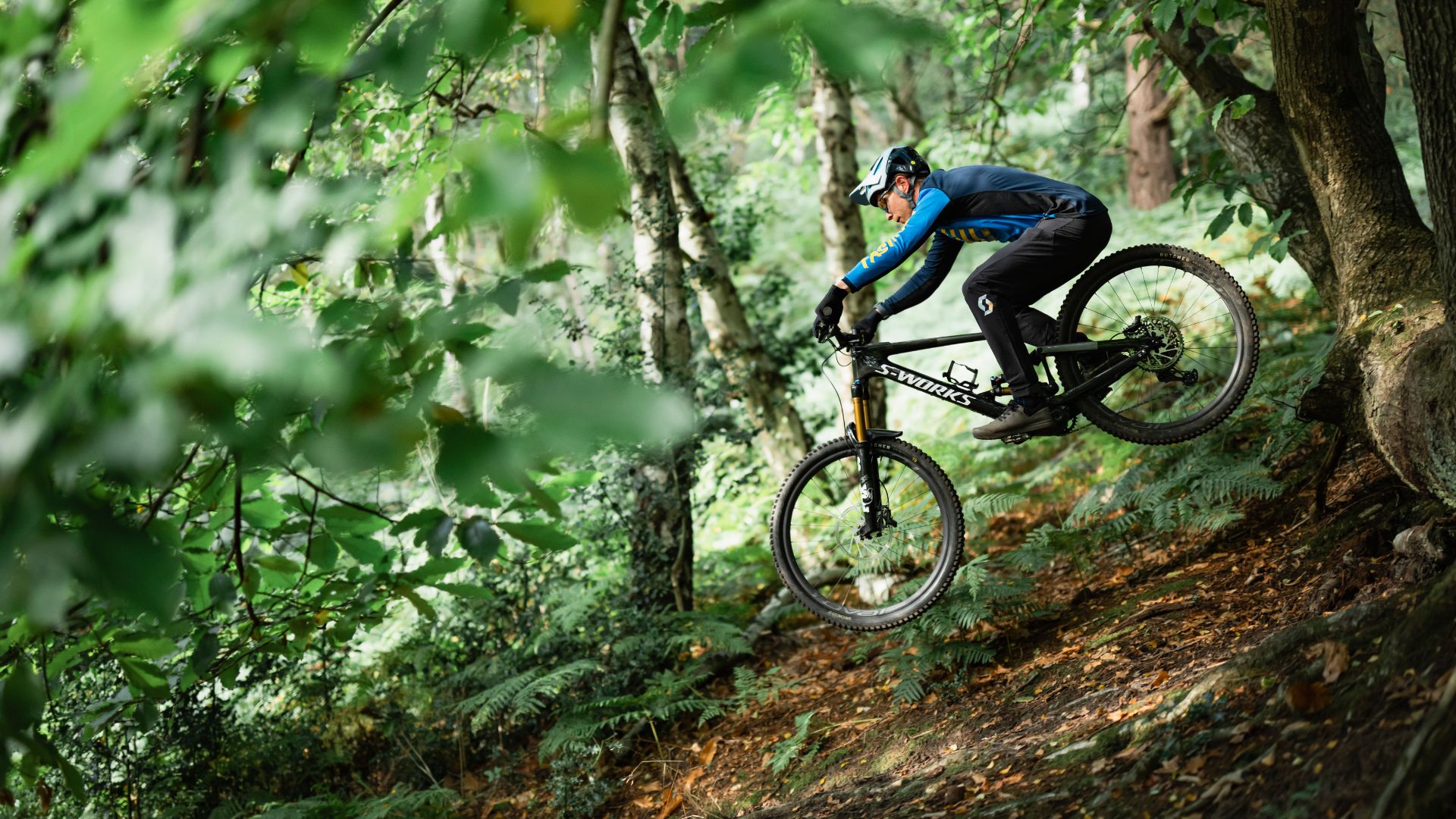
Take the Enduro, bolt a 35 Nm motor to the BB shell and shove a 320Wh battery into the SWAT compartment on the downtube and you basically have the Kenevo SL. Obviously that’s not possible, and it’s not the whole story, as you’d still need to add the MasterMind display to the top tube and fit the handlebar remote that lets you toggle between the three power modes: Eco, Trail and Turbo. But you get the picture.

On the scale, the compact SL motor adds 1,900g, the battery an additional 1,835g. Combined that’s 3.735kg without any wiring, and it brings the grand total for the range topping S-Works Kenevo SL complete bike to an impressive 18.79kg (41.42lb). That’s 1kg lighter than the Forestal Siryon. And given most analog enduro bikes with similar build kits currently weigh around 15kg, unless motor and battery tech improve dramatically, the weight of the low-powered e-bike is not coming down anytime soon.

Clearly the Enduro and Kenevo SL share similar silhouettes, but the frame layouts are not identical. Adding the motor bumps up the height of the shock tunnel by roughly 30mm, which in turn eats into the seat tube length available for the dropper post. With the 170mm RockShox Reverb AXS post the minimum saddle height on the S4 size is 755 mm (centre of BB to top of saddle), which is tall for what is effectively as size L.
So even though Specialized makes a big deal about its S-sizing and the ability to choose your bike size on handling, not just fit, the limited seat tube insertion on three of the four available sizes is a real roadblock to an otherwise great idea. Also with only four sizes, the jumps between each size is 25mm, so some riders will slip between the cracks.
In terms of adjustability, the Kenevo SL is streets ahead of the Enduro. The addition of offset upper headset cups give you three head angles, stock 63.7º or +/- 0.75º. The BB height and chainstay length are also adjustable, but not independently – flip chips in the chainstay pivots offering low/long or high/short settings. Together that’s six different configurations, and Specialized even has an online geometry calculator to help you navigate all the permutations.
Suspension
Like the Enduro, the Kenevo SL uses what Specialized refers to as its 6-bar suspension design to deliver 170mm travel. And just like the Enduro, the Kenevo SL overdelivers on its travel promise – we measured vertical rear wheel travel at a whopping 174mm. But let’s back up for a minute. Is the suspension on the Kenevo SL really a 6-bar? In short, no. It’s still a classic 4-bar design. The twist being that with some creative accounting Specialized adds the two sub-links that drive the shock to its 4-bar equation, even though these links do not impact the anti-squat or anti-rise characteristics in the way a true 6-bar design would.

Semantics aside, the S-Works bike gets a high-volume Fox Float X2 shock, with 4-way damping adjustment. Performance on the X2 is first rate, but the latest design, including the shock on our test bike, has issues with cavitation, where oil and gas mix to create inconsistent damping and a distinct slurping sound when you cycle the suspension. It’s a quick repair that’s covered under warranty and once fixed the shock on the Kenevo SL proved 100% reliable.
With relatively high anti-squat and progression, we ended up running the compression adjusters in the X2 shock towards the open end to give a plusher suspension feel, especially on bigger square edge hits, as there was a metric ton of support for hard pedalling efforts and slamming turns.
At the opposite end of the bike sits the Fox 38 Factory fork. It’s solid without looking too imposing, and with 170mm travel it’s every bit the measure of the rear suspension. And while Fox forks have needed more TLC in the past to keep them running smoothly, the addition of the lubrication channels on the self-aligning lower legs seems to keep the latest crop of 36s and 38s running much smoother for much longer.
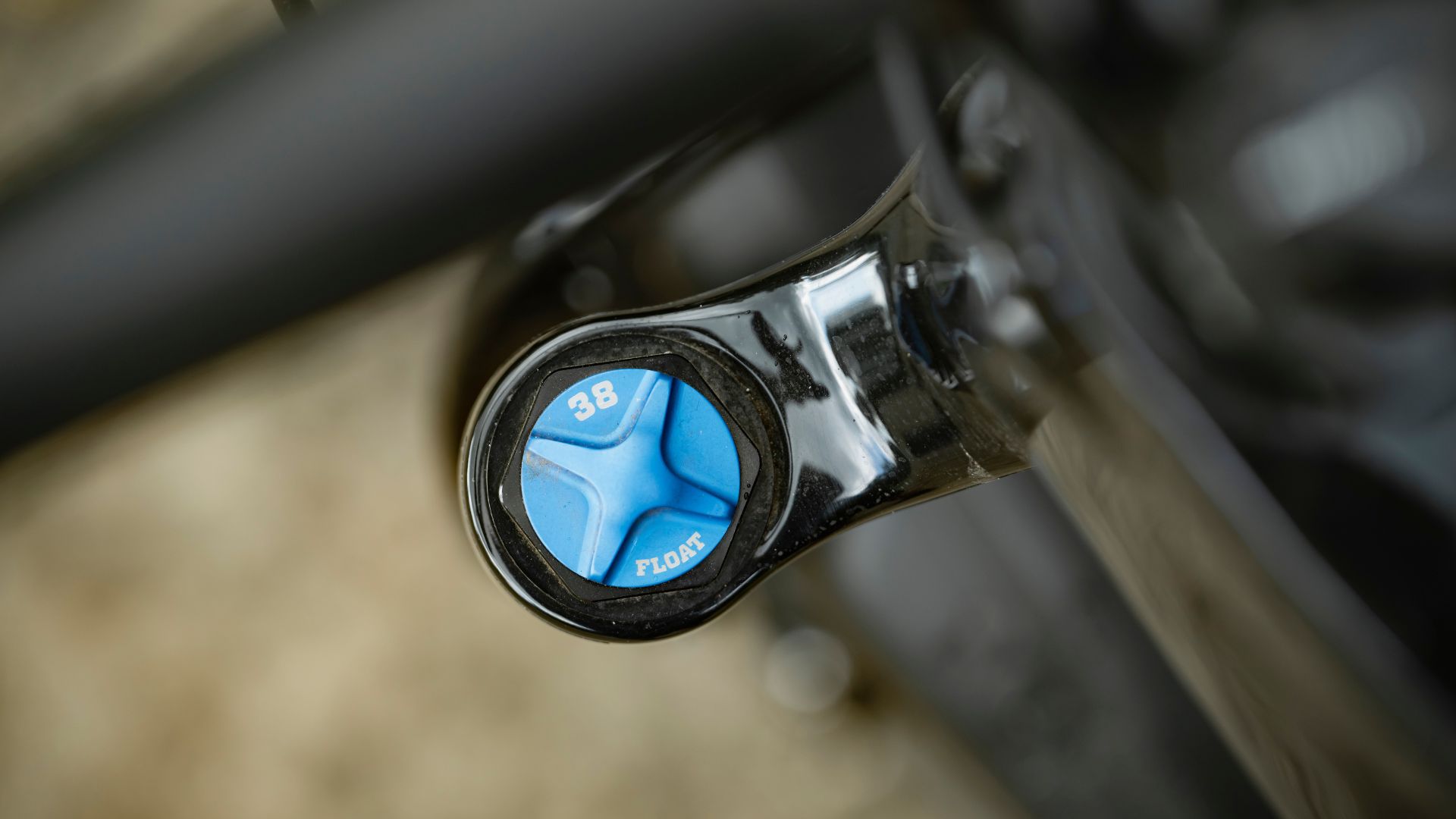
Components
Even though the Kenevo SL is light, Specialized hasn’t chased headline weights with the build kit on the S-Works bike. Instead, it’s focused on reliability, so you get an almost identical specification to the S-Works Enduro. Albeit for a £3,500 upcharge on what’s already a really expensive bike. The idea being, that if it’s tough enough for a EWS it should easily handle anything a normal rider on a slightly heavier bike can throw at it.
With the wireless SRAM XX1 AXS drivetrain and matching RockShox AXS dropper, the cockpit area on the Kenevo SL is clutter free. And because the SL motor only has 35Nm torque, it gets the wide range 10-52t Eagle cassette, as you can’t rely solely on the power of the motor to get you up the steepest climbs. Handy too, if you miss time your energy use and you run out of juice. Because while the drag in the SL motor is much lower than on a full-power e-bike, it’s not drag free or silent.

We love the 50mm Deity stem and matching grips, and we rolled the Traverse SL Carbon riser bar back a lot to kill off some of the up sweep and bring our hands closer in line with the steering axis. If you ride more elbows out and like the increased upsweep, then fitting a shorter stem will have the same effect.
It’s taken Specialized a while to get its tyre compounds dialled in, but the new soft T9 and faster rolling T7 compound Butcher tyres on the Kenevo SL are great in all conditions. The addition of the tougher Grid Trail sidewall offers extra support and increased puncture protection for the carbon Traverse SL rims. Handy on any bike, but especially one as capable as the Kenevo SL. After months of abuse we’ve noticed some indexing in the bearings of the rear hub, which is probably a result of us being overzealous when tightening the rear axle.
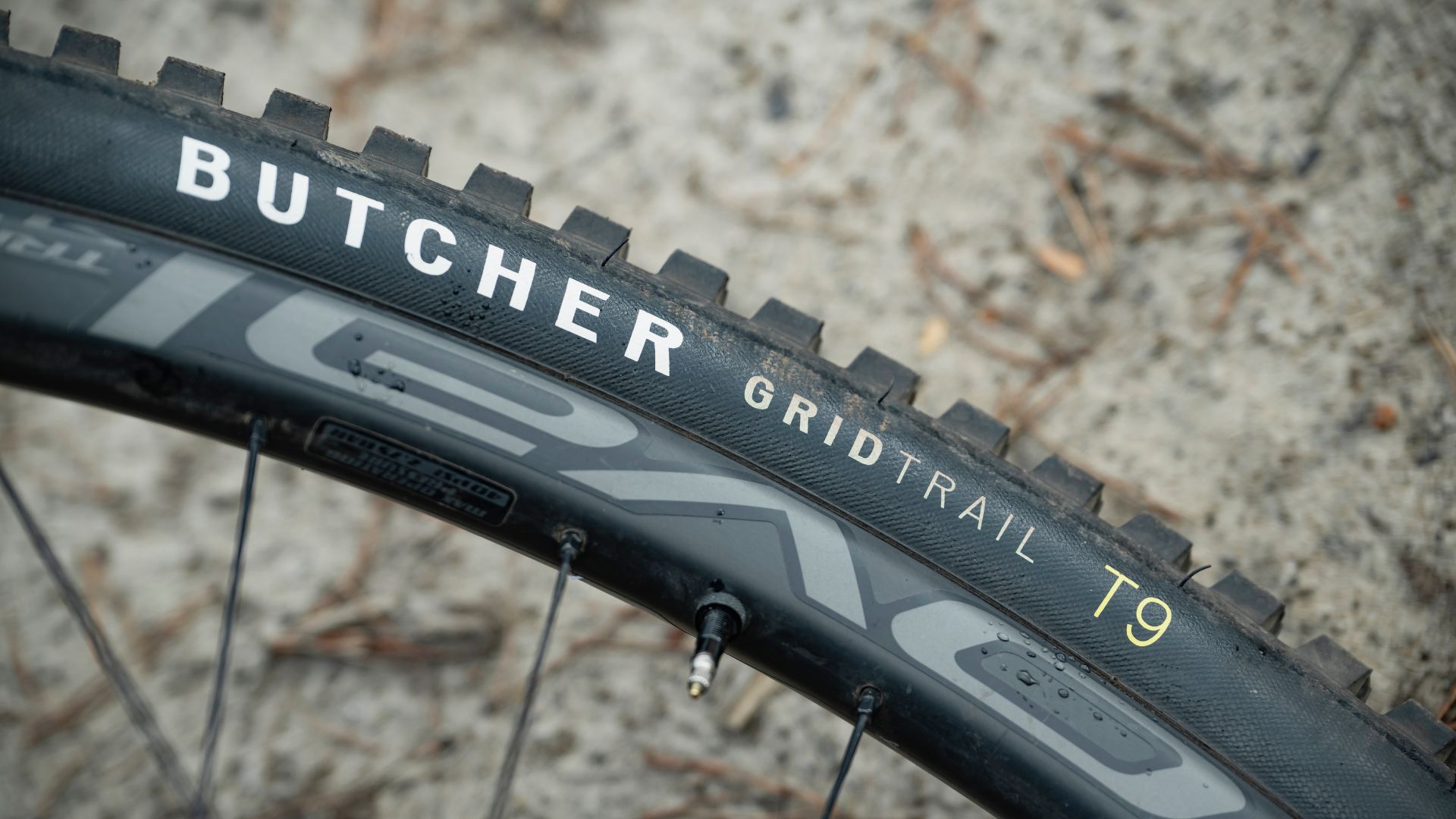
Performance
We’ve drawn a lot of comparisons between the Kenevo SL and the Enduro in this test. So it’s somewhat fitting that after experimenting with all of the geometry adjustments on the Kenevo SL we ended up in a similar spot to the Enduro, settling on the neutral head angle and high BB/short chainstay setting. And the reason is twofold.
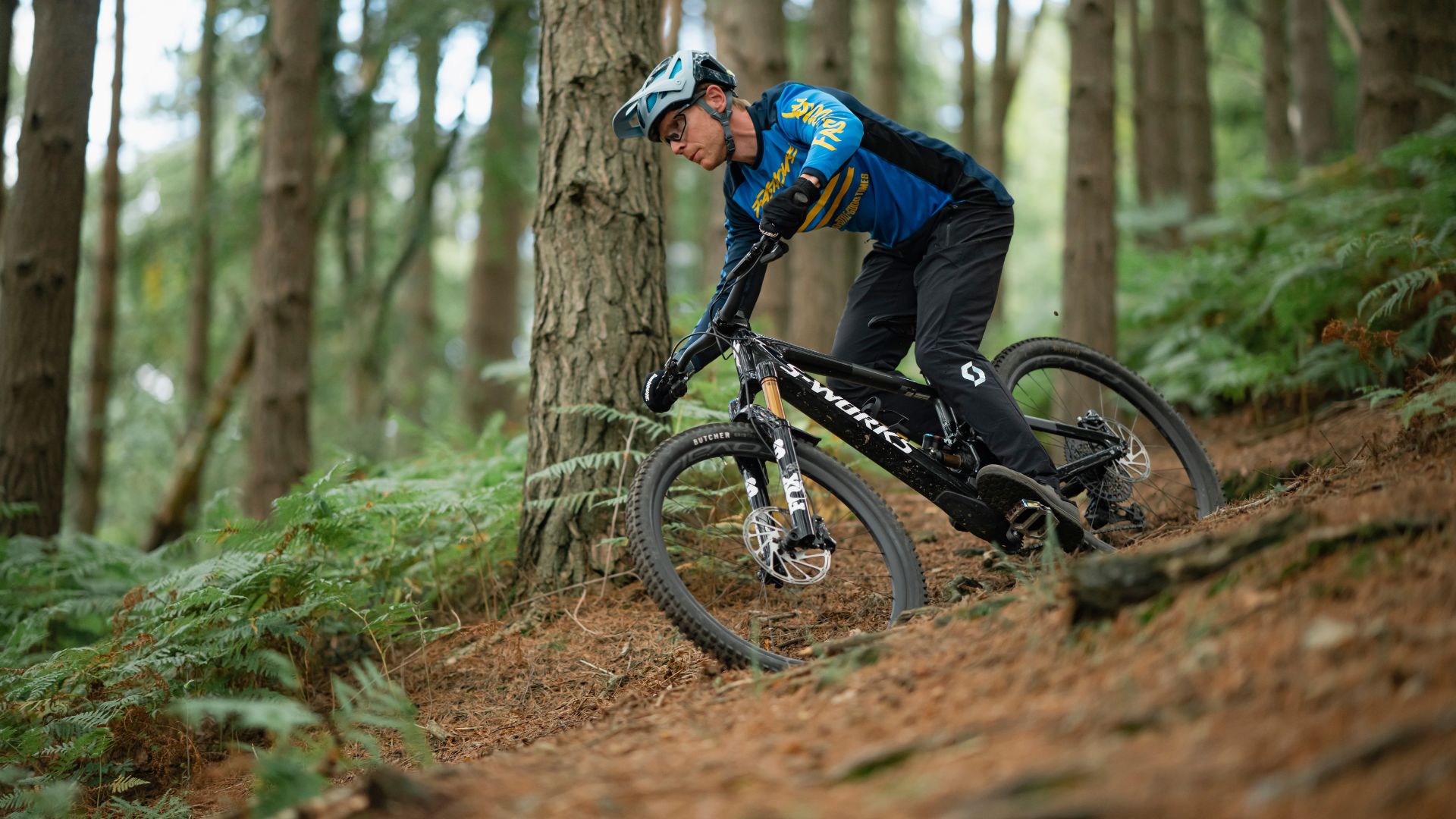
The size S4 Kenevo SL is a big bike, so the taller BB height and associated shorter chainstay length makes the S4 size feel more dynamic. In fact, if we were testing the S3 we’d have done the opposite, lengthening the wheelbase by slackening out the head angle and running the long chainstay setting, the associated lower BB height enhancing stability further. And some riders will probably want a mix of both.
So it begs the question then, why did Specialized ditch the flip-chip in the shock eyelet that allowed you to adjust the BB height independently of the chainstays? Maybe 12 geometry options is just too much, even for Specialized.
The second reason for running the Kenevo SL in the high setting, is that it allowed us to run the shock softer for a smoother suspension response with less ramp up, but still achieve a similar dynamic BB height and head angle as the low geometry setting, And we wanted it softer because, while the 35Nm motor is nothing like as fast as a full power e-bike, or even the 60Nm Forestal, your overall trail speed is much higher than on an analog bike, especially when climbing, so you want the suspension working overtime, all of the time.
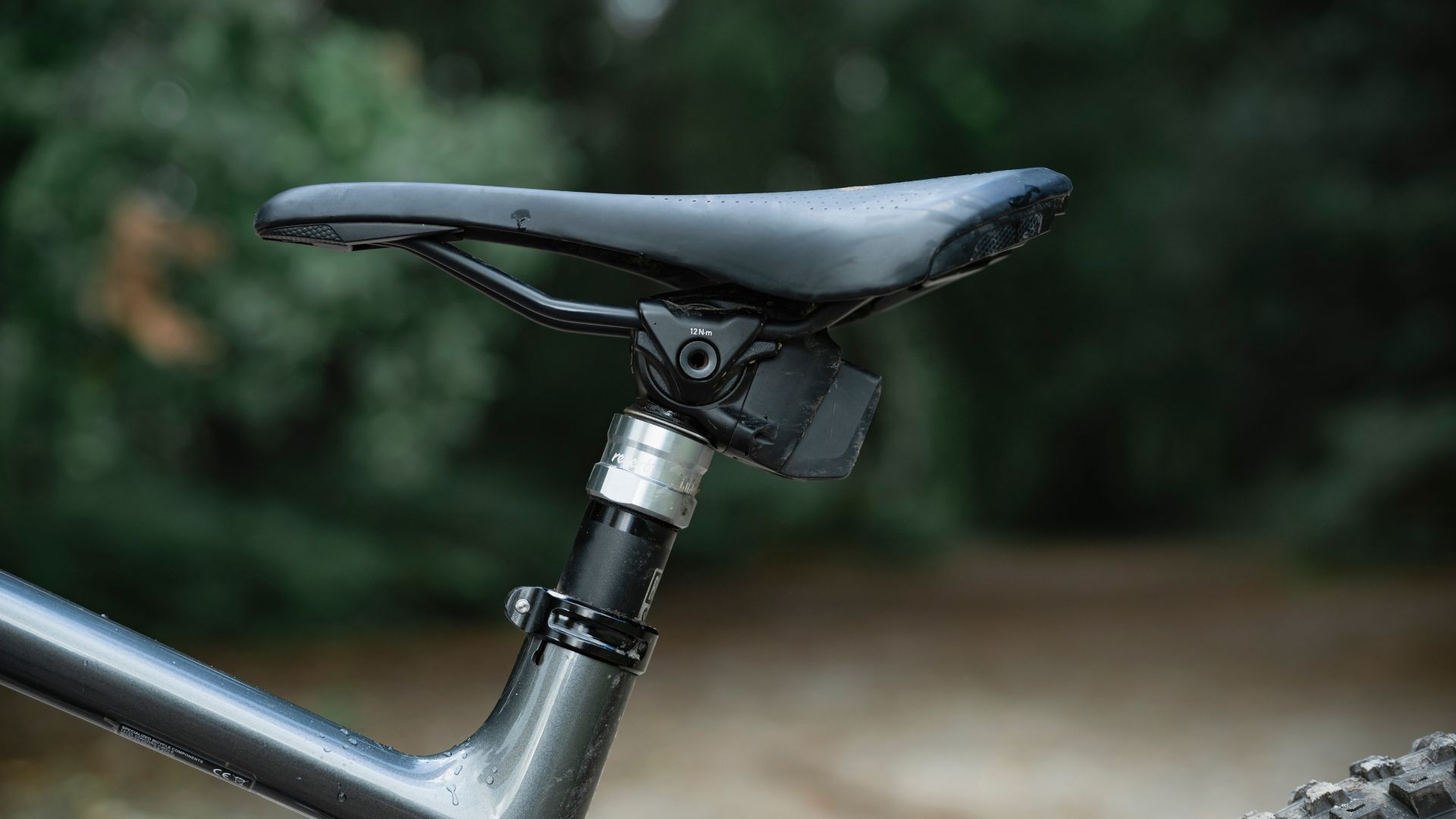
And in that respect the suspension on the Kenevo SL is similar to the latest gen Turbo Levo, tight and reactive but not super sensitive. And like the Levo it’s the shape of the bike that enables you to ride it so darn hard. And it’s when you are razzing down rougher trails that you notice the rattle emanating from the rear end. We’re not sure if it’s chain slap, the freewheel in the motor or something else entirely, but it’s annoying when everything else about the bike, including the ability to turn the display off, screams silent assassin.
In every power mode the Kenevo is faster than an analog enduro bike. And while the emerging trend is for mid-powered bikes, we actually think Specialized got it right with its lower powered SL platform. Sure, you can’t blast up the climbs as fast as on the Forestal, but having the torque capped at 35 Nm sure makes the battery last a whole lot longer.
- Best electric mountain bikes: join the riding revolution
- Best budget electric mountain bikes
- How to ride up (almost) anything on an eBike
Verdict
There’s no denying that the S-Works Kenevo SL is a thing of beauty. Specialized’s detailed oriented approach to design, evident in the seamless integration of the latest e-bike tech. It’s not picture perfect, though. The suspension isn’t super plush and the layout limits seat post insertion, while driving the water bottle mount, and ultimately the range extender further up the down tube. In that respect the side-arm design of the Levo SL and full power Kenevo, while not as sassy, definitely lend themselves better to a low power e-bike with expandable range and true S sizing. We’ll have to wait for that bike though
















